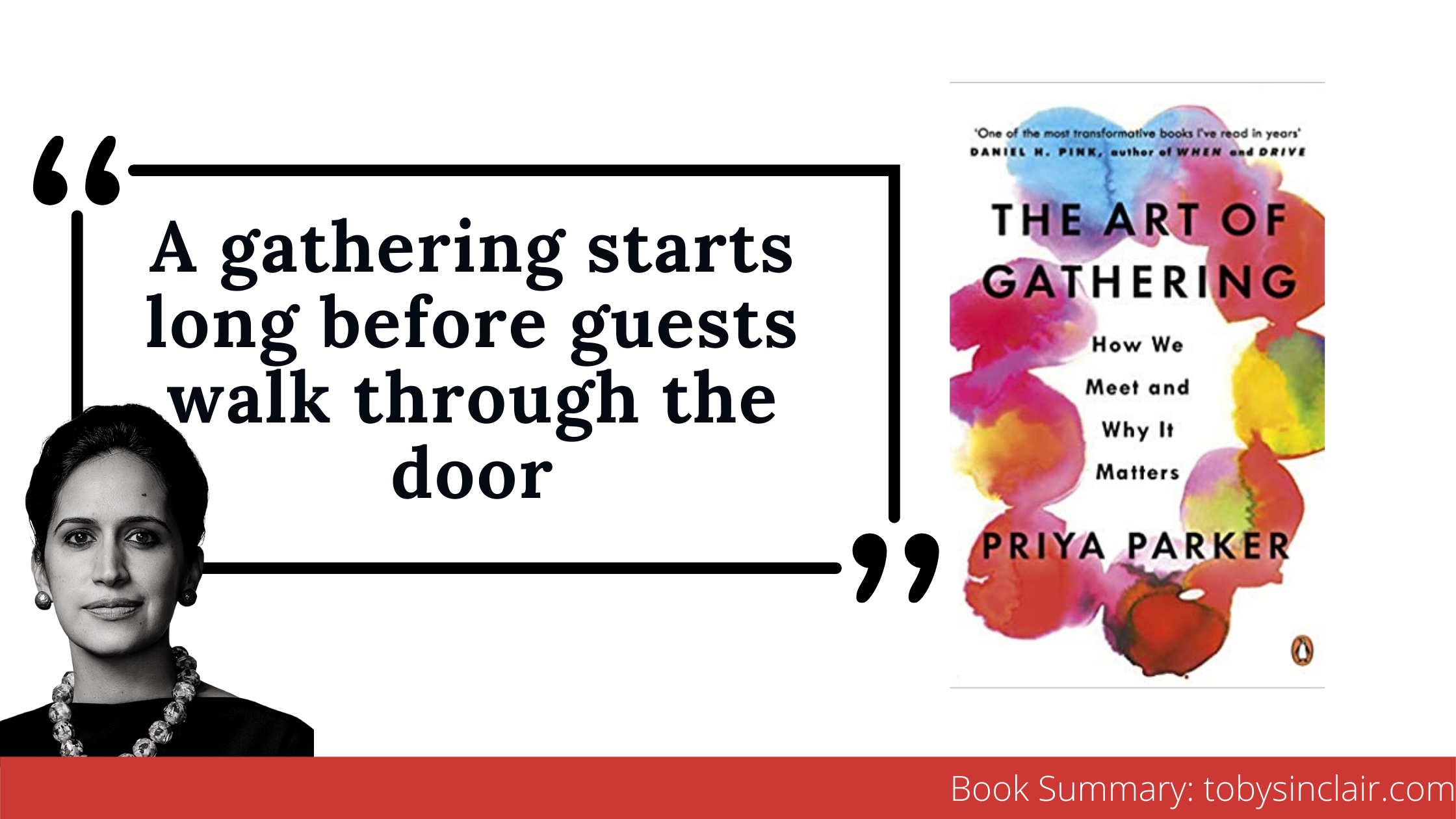Art of Gathering: Book Summary
When I first discovered “Workshops” as a design method, I felt intuitively drawn to them. I liked the idea that you can have a group of people gather to collectively think and solve. Over the years, I went from observing facilitators, supporting them, to being a facilitator, and most recently coaching others to wear the facilitator hat.
In my search to improve my facilitation skills, I came across “Art of Gathering” as a book suggestion by Tomomi Sasaki (Tomomi is fantastic and inspires me!)
I read this book in 2021 as part of the Leadership Bookclub at work. Recently I shared a summary at work and a colleague was interested in reading my notes. Here’s my first attempt at summarising the notes.
1. Decide why you are really gathering
Purpose is your bouncer: A good gathering purpose should also be disputable. It can help make decisions. It is a filter that helps you determine all the details, grand and trivial.
Commit to a gathering about something: Specificity is a crucial ingredient. The more focused and particular a gathering is, the more narrowly it frames itself and the more passion it arouses
Before you gather, ask yourself: Why is this gathering different from all my other gatherings? Why is it different from other people’s gatherings of the same type? What is this that other gatherings aren’t?
Some practical tips on crafting your purpose: Zoom out, Ask yourself why you want to have this gathering, Reverse engineer an outcome
2. Close doors (and pick your space)
Who:
The purpose-driven list: Unlearn “more the merrier”
The kindness of exclusion
Good exclusion activates diversity
Where:
A venue is a nudge
Choose a setting that embodies the reason for your convening
Displacement is about breaking people out of their habits. You can do this through the location as well
Perimeter, area and density are key for dynamics
3. Don’t be a chill host
Chill is selfishness disguised as kindness
Protect, equalize, and connect your guests
The rise of pop-up rules: Have rules rather than relying on etiquette which can lead to misunderstandings
4. Never start your gathering with logistics
Try to make the purpose of your gathering felt in those first moments.
Priming: before your event starts, it has begun. It begins with the moment guests learn about the event. Asking guests to contribute to a gathering ahead of time changes their perception of it.
90% of what makes a gathering successful is put in place beforehand
The name of your gathering is also a key element of priming.
Ushering: Carry your guests across a proverbial threshold, leaving the wide world and entering your alternative world. These can be as simple as making a welcome announcement.
5. Accept that there is an end
Too many gatherings don’t end. They simply stop. Closings matter. Accepting the impermanence of a gathering is part of the art
Anatomy of a closing
looking inward: taking a moment to understand, remember, acknowledge, and reflect on what just transpired, and to bond one last time as a group
Turning outward is about preparing to part from another and retake your place in the world. What of this world do I want to bring back to my other worlds?
Don’t end on logistics. Have a thank you slide if you need it, as a second-to-last thing
